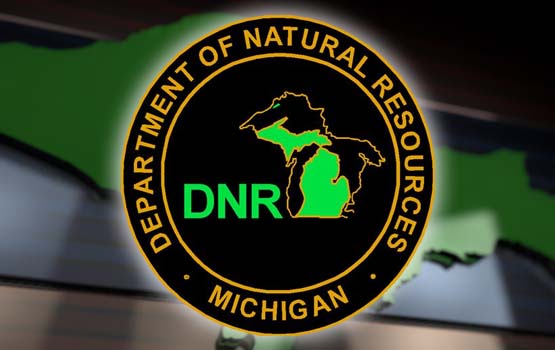A pair of regular visitors to the Sault Ste. Marie International Bridge have made the trip again this year – and they’re staying to raise their family.
Karl Hansen, bridge engineer for the International Bridge Administration (IBA), reported that pair of peregrine falcons have successfully nested atop the bridge between the U.S. and Canada this spring, hatching four chicks.
IBA General Manager Phil Becker said the bridge’s steeplejacks closely watch for the falcons to return each year.
“As time allows, they monitor the nest without disturbing the birds,” Becker said. “Our staff really looks forward to the return of the birds and waits with great anticipation for the occasional reports coming in from our steeplejacks on the growth of the chicks.”
The reports this year have been excellent.
All four young birds – three females and one male – were successfully banded Tuesday by biologists from the Michigan Department of Natural Resources (DNR). According to DNR wildlife biologist Kristie Sitar, color-coded bands attached to the legs of young birds allow scientists to track the movements, reproductive behavior and population growth of the falcons.
In addition to their leg bands, the peregrine chicks received names Tuesday: the females are Jasina, Dwaynette and Q, while the lone male is named Frank.
The successful hatching is the culmination of an ongoing commitment by the IBA. Nest boxes for the peregrines have been installed since 2010 on the both the U.S. and Canadian arches but the birds had been visiting the bridge for many years prior to that. The same pair of adults has been returning to the U.S. side nest each year but, so far, none have taken up residence in the nest box at the Canadian arch.
Sitar said peregrines have been active at the International Bridge since 1999. Before the nest boxes were installed, the falcons laid their eggs in gravel on the exposed pier top – and there were unfortunate instances of eggs and chicks being blown off. Hansen counted 18 chicks hatched out of the nest boxes since they were installed.
“The key point is that the survival rate for the chicks has greatly increased with installation of the nest boxes,” Hansen said.
MDOT also has boxes with nesting falcon pairs on the Portage Lake Lift Bridge between Houghton and Hancock and on the Mackinac Bridge. Every nesting site is special – Sitar said there are only 46 nest sites in the entire state and 38 of them are on artificial structures. Most of the natural sites are inaccessible for banding birds, so the artificial sites are even more important.
“The very large majority of birds breeding in Michigan are using artificial structures,” Sitar said. “And the birds tend to return to nest in the same type of structures they were fledged from.”
The peregrine falcon has been removed from the federal endangered species list, but is listed as an endangered species in Michigan, protected by state and federal law. The hatchlings at the International Bridge are examples of the species’ urban comeback.
Peregrines have adapted to city habitats, nesting on tall buildings, smokestacks and bridges around the world. Sitar said studies have found birds tend not to nest in the same area where they were hatched, but spread out across the Midwest.
High-speed hunters capable of flying at 200 mph, the peregrines help keep populations of nuisance pigeons under control at MDOT bridges.
For more information on the International Bridge, please visit www.saultbridge.com or follow us on twitter at www.twitter.com/saultbridge.
 Keweenaw Report Your Source for Local News and Sports
Keweenaw Report Your Source for Local News and Sports





